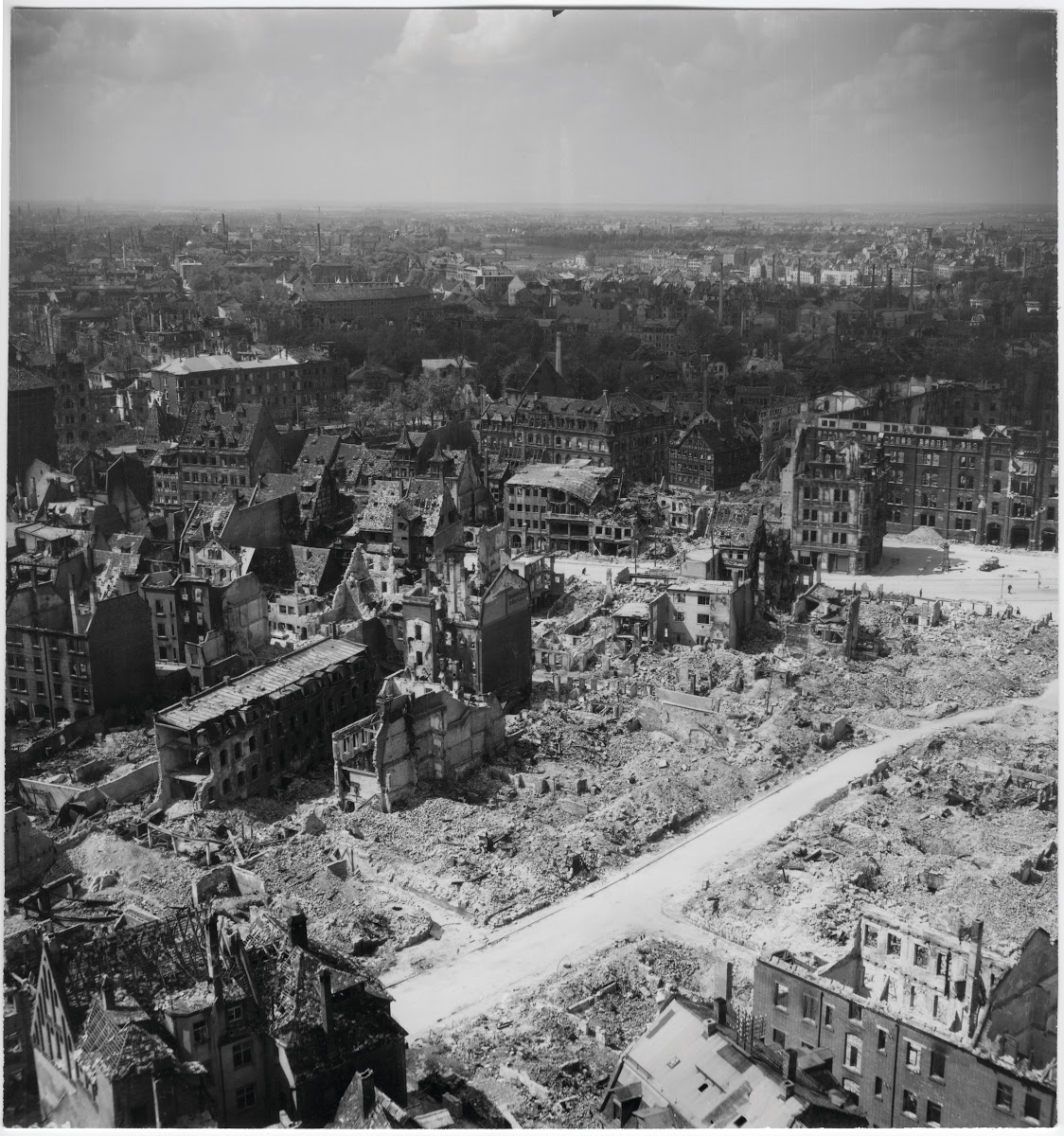
During the Second World War, there were heavy air attacks on Ulm. The most severe air raid was carried out on 17 December 1944; hundreds of people were killed or injured.
Around 25,000 people were left homeless solely by this attack on Ulm. By the end of the war in 1710, air war victims were captured and destroyed 81% of the historical Old Town. Only 1,763 of the 12,756 buildings in the city remained intact. Miraculously, the Gothic cathedral remained standing and stood up to the surrounding ruins.
1940 To Fall 1944
The first air strike hit on 4 June 1940, Klingenstein a few miles west of Ulm, in which 5 people were killed. The number of air raids grew in the years 11 (1941) to 19 (1942) and adopted in 1943 to increase. However, bombings were the exception and possibly caused damage. From the end of February 1944, the number increased to raid alarms at night and even during the day increased significantly.
On 16 March 1944 was the first daylight raid, led by a USAAF fleet (on the way back from a charge on Augsburg), which claimed 10 lives. As of July 1944, there were further air attacks, the Ulmer freight station (intersection of essential rail lines from the Rhine via Munich to the oil fields of Romania and the seat of war in Italy) and the Magirus-Werke (production of heavy military vehicles and fire extinguishers) were essential targets. An attack on 9 August 1944 called for 57 victims, 10 more, and on 13 September, 49 or 32 deaths.
17th December 1944
The attack on 17 December was the only major attack of the British Bomber Command in the city center of Ulm in the context of morality bombing strategy. On the outskirts of Ulm were several strategic objectives: The truck factories of Magirus-Deutz and Kässbohrer and army barracks and depots. A total of 1,449 tons of bombs were dropped during the 25-minute attack.
The core target area was the city center (Cathedral Square). Ulm’s Old Town was selected as the core area of the attack because the wood portion of the total building volume was the highest. So they turned to ignite a firestorm optimal in Ulm, the core target single division From this, the bombarding area moved to the west to the industrial areas and railway systems. Large parts of the old town, Gallwitz Barracks, and several hospitals and industrial plants were destroyed. The air raid was as follows: Before the bombardment, the target area of Mosquito bombers Quickly by red and green marker bodies (so-called Christmas trees) was delineated.
This was monitored by a master bomber flying at high altitude, which was connected by radio with the tag planes. Then, the master bomber checked on a lower trajectory once the Ulm target area defined the exact approach heights and gave the attack-free. First, thousands of bombs and mines had been dropped several hundred air. By the pressure waves of explosions, the roofs were torn.
Thousands of incendiary bombs were dropped on the target area, which now fell into the rafters of houses, and this offset within the shortest possible time in full blaze. Within a short time, thousands of smaller building fires widened to major fires, which – helped by overall weather conditions and wind direction – to the creation of a firestorm led.
The attack of the 17th December 1944 was carried out by 317 Avro Lancasters and 13 De Havilland Mosquito light bombers of No.1 and No. Bomber Group.8 Bomber Group of the RAF. 2 Two Lancaster bombers were shot down by German flak.
The attack called officially caused 707 deaths, and 613 people were wounded.
In 1945
Further attacks Ulm met from February to April 1945 caused significant damage in areas not previously reached the city. On 22 February 1945, 206 people were killed, including at least 155 in the collapse of a public air raid shelter in Söflingen district. An even larger fleet than 17 On 1 December 1944 bombed Ulm in March 1945, where 479 people were killed.
There were other attacks, and increasingly by low-flying aircraft with on-board weapons. On 19 April 1945, 91 people died again. It was the occupation of the city on 24 April 1945 by einrückende west of Allied troops that marked the end of the bombing.